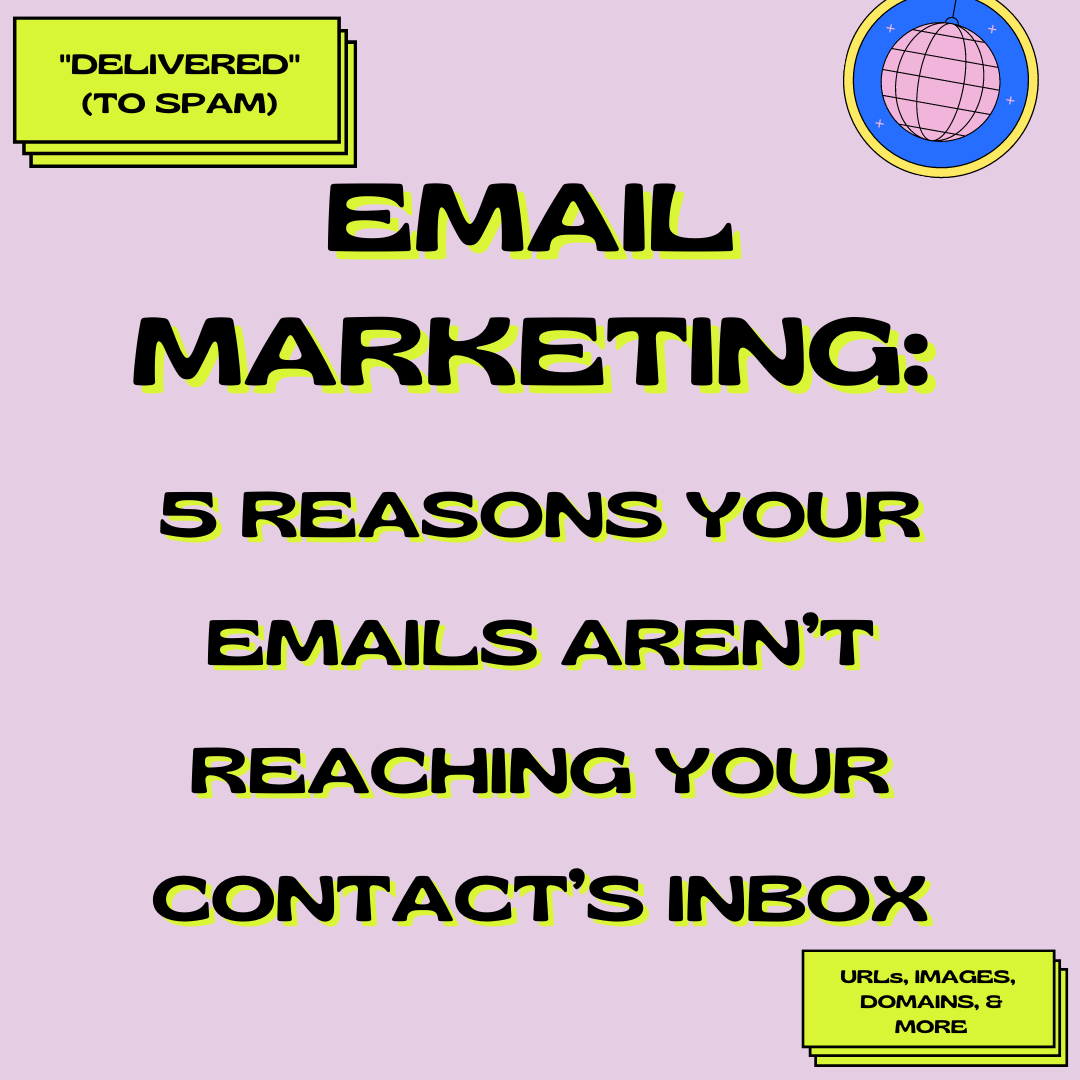5 Reasons Your Emails Aren’t Reaching Your Contact’s Inbox
In terms of email marketing, a lot of emphasis is specifically placed on the content of your emails, or the writing and design. But what if your email campaigns aren’t even making it into your recipient’s inbox? This deliverability issue is serious, as making it into the inbox is the only way to get the “opens” and conversions. When monitoring email campaigns, many assume that an email being flagged as “delivered” means that it made it to the recipient, however this is not true. “Delivered” emails also include emails that were sent to the Spam, Junk and Promotion Folders. If you want to find out if your emails are making it to the inbox, you should be analyzing “Inbox Placement” instead. Most Email Service Providers (ESP) have this information available; if you find that your ESP does not, it may be time to switch. Once you start tracking this placement, you may notice that your emails are not where they should be; it’s at this point that you should audit your past campaigns for possible explanations. Keep reading for the most likely reasons your emails aren’t reaching your contacts.
1. Emails Are Sent From a Free Domain Email Address
Using a free domain name or a “from” address that is not your domain should be avoided at all costs. Using authentic domain names prevents ISPs from blocking your emails and helps your recipient recognize you, which helps you grow a credible email reputation and lessens your chances of being blocked, or marked as spam.
2. Including URL Shorteners
URL shorteners can be extremely helpful since long URLs can appear chaotic and hard to recognize. While ELE certainly uses URL shorteners (specifically bit.ly), we encourage you to leave them out of your email campaigns. Spammers are notorious for using URL shorteners to mislead recipients on the nature of the URL that they are luring you to click. For this reason, ISPs may flag any email with a URL shortener as a possible spam risk. If you want to include a URL that is unseenly or messy, hyperlink it in the email as an alternative to URL shortening.
3. Email Has Too Many Images
Sending an email where the majority of content is image based is a classic spam trick. Originally, spam filters would search for words, this led spammers to using images instead. Now if an email’s ratio has a high volume of images, ISPs will see it as a possible spam risk. It is suggested that your email is no more than 40% images, 60% text.
4. Unclear or Spam-Flagging Subject Lines
This is an easy trap to fall into for marketers; sometimes in the pursuit of creating attention-grabbing subject lines, they can end up being recognized as spam. To avoid this dilemma, follow these simple rules: avoid all-caps and use additional punctuation like (!!!!!) and special characters (like emojis) sparingly.
5. Using a Single Opt-In For Your Subscribers
Single opt-in refers to the adding of subscribers to your contact list without them verifying that they willingly joined that list. Conversely, double opt-in requires confirmation from the recipient before they are officially added. Using double opt-in reduces spam bots (as they cannot read every email individually), grows your credible reputation, and of course reduces the number of incorrect sign-ups.
